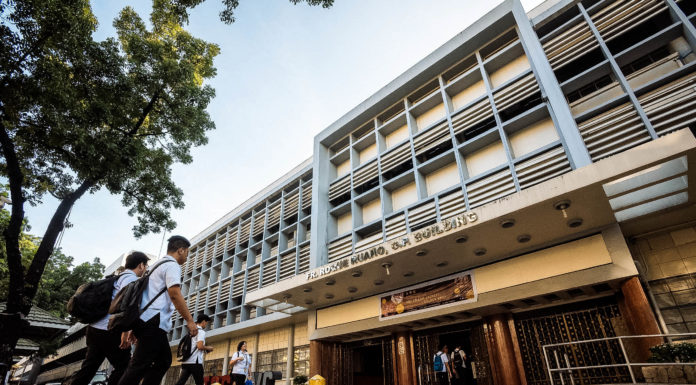GOLD and platinum may be more than just precious metals.
This is what a study by a Thomasian professor is looking at with the possibility of gold and platinum to be a “pathway” for electric current that if developed would help the country in gaining power independence.
Professor Bernard John Tongol from the College of Science started last January his study titled The Development of Au(111) and Pt(111) Single Crystals as Substrates for Nanomaterials: preparation, characterization, and applications that focuses on the utilization of specially prepared crystals of gold and platinum, or single crystals, as conductors for ethanol, an alternative source of biofuel energy obtained from the fermentation of sugar canes and corn.
All transport fuels sold in the country have a mixture of two percent biodiesel, a kind of biofuel, as mandated by Republic Act 9367 also known as the “Biofuels Act” that was signed into law by President Gloria Macapagal-Arroyo in 2006.
Now, Tongol wants to know if the biofuel energy can be of more use by flowing of energy with gold and platinum as conductors.
The research is being conducted in cooperation with the UST Research Center for Natural Sciences, and is being supported by the Philippine Council for Advanced Science and Technology Research and Development under the Department of Science and Technology
“The research applies the concepts of electrochemistry, the study of electricity conduction, to test out polymers or materials made up of large molecules that can be used to make innovative, low cost electronic devices such as sensors, transmitters and solar batteries.” Tongol said.
He said the study, which is expected to be finished by January, would look at gold and platinum as better conductors.
“Gold and platinum are anode materials, or materials where electric currents flow and where electric conduction reactions take place,” he said. “One phase of the research involves turning these metals into specially prepared single crystals, which are structured so that electric conduction can pass through them easier.”
Single crystals are gold and platinum taken out on their original form, which will be polished in order to improve their structures. “First, I produced the single crystals by melting the gold and platinum wires using hydrogen flame and then using layers and polishing to modify the molecular structure of the metals,” he said.
“The crystals are made to absorb nanomaterials that can help in the conduction of formic acid, a product of ethanol,” Tongol added.
This will be studied further for feasibility in producing a whole fuel cell, also known as bio fuel, research on electricity from a renewable source.
“So far, we have already acquired data from our analysis of gold single crystals, and we are about to perform studies on the platinum single crystals,” Tongol said.
Tongol said the study aimed to aid the establishement of bio fuels as an energy source which would be a good contribution to energy research in the country that is primarily concentrated in conservation of resources and development of new energy sources.
“The Philippines is only on the starting ground in nanotechnology and fuel research in general,” he said. “Eventhough universities like the University of the Philippines, Ateneo de Manila, and UST are already conducting studies on these topics, we are still lagging behind the rest of the world.”
He, however, admitted that to take the project in the national setting would be costly for the government.
“But in the long run it will be most beneficial for our country since it will not only help lessen our dependence on oil importations, but also help promote clean energy use.”















